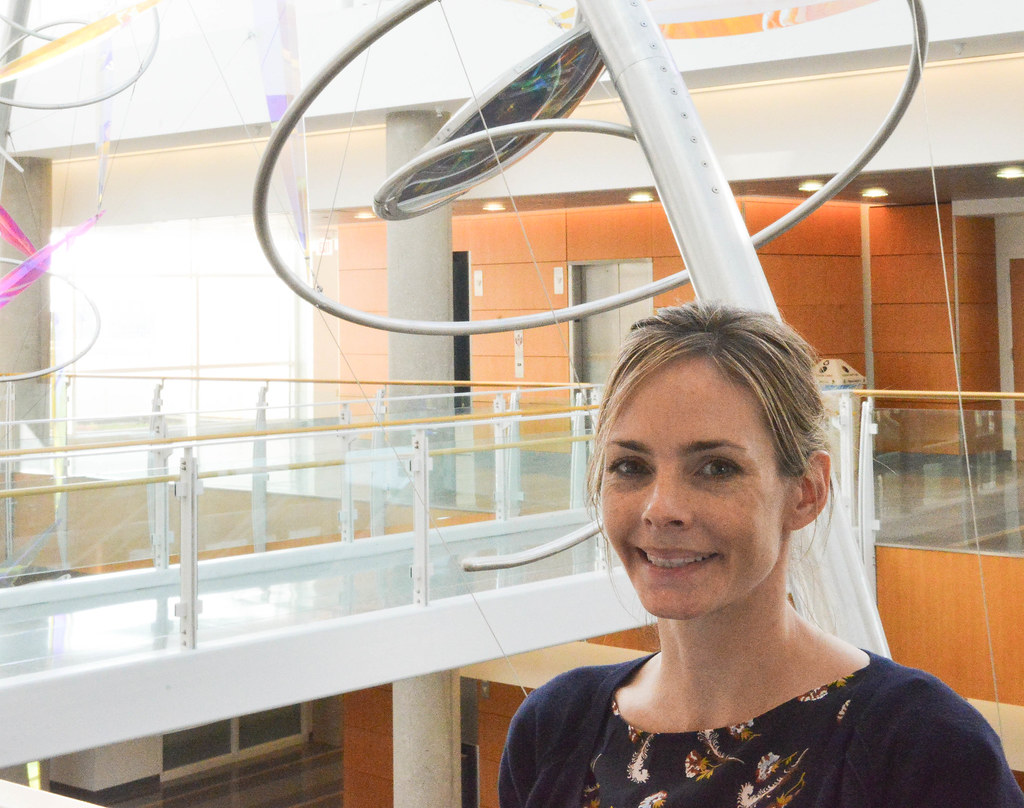Bond LSC scientist works with MU eye surgeon to help people suffering from autoimmune-disease Sjögren’s syndrome

By Phillip Sitter | Bond LSC
They may not get much respect, but tears and spit are the products of a delicate secretive system that people would pay their respects to in mourning if they discovered that system was dying.
Gary Weisman and Dr. Carisa Petris are working together to help heal the damage caused by such a chronic lack of tears and saliva. The pair recently received a $100,000 Bond Life Sciences Center Grant for Innovative Collaborative Research to allow Bond LSC’s Weisman to partner with Petris, an eye surgeon working at MU Hospital.
They want to study the mechanism by which the auto-immune disease Sjögren’s syndrome cripples the glands of the eyes in mice. By comparing that mechanism to how it works in human eyes, they hope to examine if effective treatments for the mice could in turn help people.
“Dr. Weisman has characterized [Sjögren’s syndrome] in the salivary glands, and then there are similar glands in the eye called the lacrimal glands, and those are the tissues that we’re going to study,” she said of their collaboration.
Sjögren’s attacks the glands in our bodies that produce tears and saliva. Without tears and saliva, people suffer chronic dry mouth and eyes and are more susceptible to infections. Sjögren’s itself can also spread to other parts of the body, including the lungs, kidneys and digestive organs. An estimated four million people in the United States live with the disease, according to the Sjögren’s Syndrome Foundation.
Much of the grant money will go toward the costs of obtaining and housing new knockout mice for the study. These mice have a disabled, or knocked out, gene that causes them to express a certain trait like the dry eyes and development of Sjögren’s in this case.
“It takes a few weeks to a couple months for the disease to fully manifest itself, so we’ll house those mice for that time, and then of course, we’ll be treating them with the drug, and not with the drug, some for harvesting just the lacrimal glands and [studying] the surface of the eye,” Petris said.
Even though Sjögren’s syndrome and inflammation research are big topics, there’s just no good solution to the problems yet.
“There are a few [eye] drops that are used for Sjögren’s now, and they’re at best helpful, but they don’t cure the disease, so that would be the ultimate goal. They help decrease the inflammation that goes along with it and increase the tear production. The drops are also limited in their longevity too — you can only use them a certain length of time before they tend to not work so well anymore,” Petris said.
Petris referred to one drug that shows promise. The drug or another like it would interrupt the autoimmune response that causes the damaging inflammation that leads to Sjögren’s. It has already shown good results for reducing the symptom of dry mouth in mice, so Petris said she and Weisman will add it to some of the eyes of their mice and see if has any similar effect it reducing dryness there.
Gary Weisman was recently recognized for his career studying auto-immune responses with an award at an international conference in Seoul, Republic of Korea. Read more about Sjögren’s syndrome and Weisman’s work here.
This seed funding is one of seven awarded this year at the Bond Life Sciences Center. These awards, which range from $40,000 to $100,000 in funding, foster inter-laboratory collaboration and make possible the development of pilot projects. Read more about another Bond LSC seed funding grant-supported collaborative project here.

